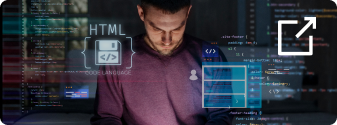- Services
Software Development as a service (SDAAS)
Accelerate your time-to-market with unmatched quality through our subscription-based development services
Software Development as a service (SDAAS)
Accelerate your time-to-market with unmatched quality through our subscription-based development services
SDaaS
Software Development as a Subscription

SecaaS
Security as a Service

MVP Development
Launch Your MVP in 30 Days

Blockchain Development
Building secure decentralized solutions

Legacy System Modernization
Modernize Your Software with AI

AIaaS
Artificial Intelligence as a Service

- Staff Augmentation
- Industries
- Portfolio
- Insights
- Contact us
- Services
Software Development as a service (SDAAS)
Accelerate your time-to-market with unmatched quality through our subscription-based development services
Software Development as a service (SDAAS)
Accelerate your time-to-market with unmatched quality through our subscription-based development services
SDaaS
Software Development as a Subscription

SecaaS
Security as a Service

MVP Development
Launch Your MVP in 30 Days

Blockchain Development
Building secure decentralized solutions

Legacy System Modernization
Modernize Your Software with AI

AIaaS
Artificial Intelligence as a Service

- Staff Augmentation
- Industries
- Portfolio
- Insights
- Contact us
- Services
Software Development as a service (SDAAS)
Accelerate your time-to-market with unmatched quality through our subscription-based development services
Software Development as a service (SDAAS)
Accelerate your time-to-market with unmatched quality through our subscription-based development services
SDaaS
Software Development as a Subscription

SecaaS
Security as a Service

MVP Development
Launch Your MVP in 30 Days

Blockchain Development
Building secure decentralized solutions

Legacy System Modernization
Modernize Your Software with AI

AIaaS
Artificial Intelligence as a Service

- Staff Augmentation
- Industries
- Portfolio
- Insights
- Contact us
- Services
Software Development as a service (SDAAS)
Accelerate your time-to-market with unmatched quality through our subscription-based development services
Software Development as a service (SDAAS)
Accelerate your time-to-market with unmatched quality through our subscription-based development services
SDaaS
Software Development as a Subscription

SecaaS
Security as a Service

MVP Development
Launch Your MVP in 30 Days

Blockchain Development
Building secure decentralized solutions

Legacy System Modernization
Modernize Your Software with AI

AIaaS
Artificial Intelligence as a Service

- Staff Augmentation
- Industries
- Portfolio
- Insights
- Contact us
- Services
Software Development as a service (SDAAS)
Accelerate your time-to-market with unmatched quality through our subscription-based development services
Software Development as a service (SDAAS)
Accelerate your time-to-market with unmatched quality through our subscription-based development services
SDaaS
Software Development as a Subscription

SecaaS
Security as a Service

MVP Development
Launch Your MVP in 30 Days

Blockchain Development
Building secure decentralized solutions

Legacy System Modernization
Modernize Your Software with AI

AIaaS
Artificial Intelligence as a Service

- Staff Augmentation
- Industries
- Portfolio
- Insights
- Contact us



